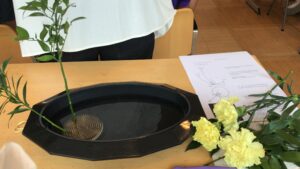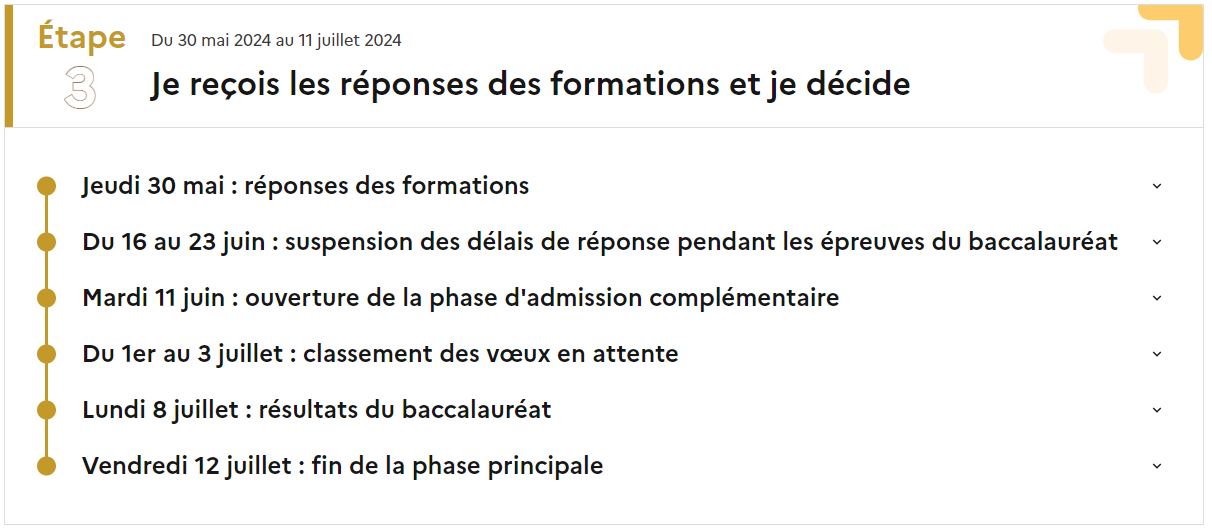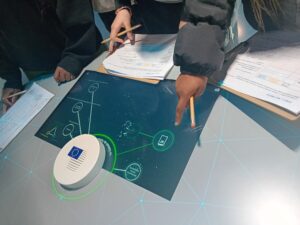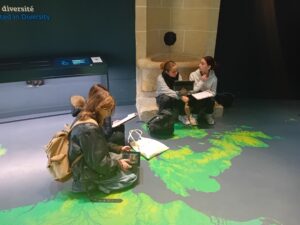Bienvenue à toutes et à tous dans un nouvel épisode du journal du lycée ! Aujourd’hui nous allons aborder les différences qu’il y a entre le genre social et le sexe biologique, au travers de mythes issues de quatre continents. A la suite d’une visite dans le musée du quai Branly le 14 novembre 2023 nous avons pris conscience de la différence et partageons nos connaissance.
Tout d’abord nous remercions Marianne, notre guide mais aussi la créatrice de cette exposition de nous avoir présenté ses différences culturelles toutes aussi surprenantes que envoutantes les unes des autres.
Premièrement nous allons voyager en Océanie et plus précisément en Papouasie Nouvelle-Guinée, dans le peuple des Sepik qui se base sur un modèle patriarcal matrilinéaire. Ensuite nous nous dirigerons au Moyen Orient au Yémen, ou les mariages exogames et endogames sont présents. Par la suite nous continuerons notre périple chez les touareg en Afrique, spécialiste dans l’égalité homme-femme et chez les Yoruba ou les femmes luttent contre les violences faite envers les femmes. Pour finir notre aventure culturelle nous irons jusqu’en Alaska chez les Inuites ou le sexe n’est pas définis par la naissance.
Bon voyage à tous !!!
L’exemple de la société des Inuits, en Alaska
Comme l’a dit Edgar Morin, « L’espèce humaine est une, mais elle est une dans un double sens, à la fois séparée et unie par le masculin et le féminin ». Nous allons justement aborder cette question de masculin féminin dont nous avons vu divers exemples chez différentes civilisations anciennes lors d’une sortie au musée du quai Branly.
Il faut savoir que dans la majorité des sociétés, il y a souvent un des deux genres qui domine (il y a tout de même une valorisation du genre masculin dans 98% des cas).
Nous allons ici nous intéresser à la société des inuits d’Alaska.
- Tout d’abord, qui sont les Inuits ?
Les Inuits sont une civilisation autochtone vivant en Arctique. Le mot « Inuit » signifie d’ailleurs « peuple » en inuktut, qui est la langue parlée par les Inuits.
Il existe différentes civilisations d’Inuits et les inuits dont nous allons parler sont ceux de la région de l’Alaska.
- Comment définissent-ils le masculin et le féminin dans leur société ?
Cette société est un peu moins définie/ nette sur la question du genre car il existe trois façons de trouver son genre :
- Dans le premier cas de figure, le sexe se décide à la naissance. Par exemple, si une personne née du sexe masculin, mais que son entourage a besoin ou veut que ce soit une fille, il considère la personne comme telle, donc ici comme une femme. Le sexe biologique est rétabli à l’adolescence.
- Dans un deuxième cas de figure, certaines personnes peuvent changer de sexe après leur naissance.
- Et enfin, dans le troisième cas, l’enfant va naitre biologiquement fille ou garçon, mais il va porter socialement l’identité de ses ancêtres décédés. Ce cas de figure est appelé le « troisième genre ». Par exemple, si dans une famille, la grand-mère vient de mourir et qu’un jeune garçon vient de naitre, on va le considérer comme une fem pour qu’il soit en quelque sorte dans la prolongation de sa grand mère. Il s’agit d’une transformation qui est seulement sociétale, c’est-à-dire qu’elle se fait dans leur façon de s’habiller, dans les activités qu’ils font, etc. Leur genre « initial », étant donc leur genre biologique se rétablit à l’adolescence, lors de la puberté et donc des premières règles.
YORUBA : UNE SOCIETE RESTREINTE
Pour commencer, Yoruba est une ethnie située au sud du Nigéria.
Elle est composée d’autant d’hommes que de femmes, dont des femmes devenues hommes. Il s’agit d’une société matriarcale : en effet, les femmes ménopausées, considérées comme des hommes , sont vues en tant que les sorcières protectrices du village.
Au niveau marital, aucun des mariages entre Yorubas n’est sentimental : tout d’abord, il y a les femmes-maris, vieilles veuves riches, qui épousent des jeunes femmes pauvres afin de les libérer de la tutelle de l’homme. Mais, tous les biens, tels que les enfants ou encore l’argent perçu par l’épouse reviendront à la femme-mari.
Même si de nombreux Yoruba sont aujourd’hui chrétiens ou musulmans, des aspects de leur religion traditionnelle subsistent. Notamment les péchés contre la chasteté tels que l’homosexualité sont très punis en Afrique, en particulier chez les hommes qui seront considérés comme des « sous-hommes » comme les hommes violents envers leurs épouses. En effet, la violence faite aux femmes est largement plus encadrée qu’en France, par exemple. Ces deux types de comportement seront punis à travers la lapidation, mise à mort en lancant des pierres car considérés comme anormaux.
Papouasie-Nouvelle-Guinée
La Papouasie-Nouvelle-Guinée est un pays qui se situe à l’Est de l’Océanie, dans ce pays la différenciation des genres y est particulière. En effet à la naissance le nouveau-né est associé au genre féminin qu’elle que soit son genre, on ne nait pas homme on ledevient. On dit que le nouveau-né appartient à sa mère jusqu’à la puberté, alors à l’âge de 13 ans, on arrache l’enfant de sa mère afin que celui-ci devienne un homme. Il va passer alors par une série d’épreuve par le sang et par le sperme, le sang est coulé car selon euxl’homme perd son sang volontairement et non la femme. La cérémonie commence par la scarification de l’enfant qui est réalisé en forme d’écaille de crocodile au niveau du dos, on touche presque la totalité de leur peau ; le strict minimum est laissé. Beaucoup d’enfants succombent à cette scarification par la perte de sang, les Papouasiens pensent que les morts ne sont pas des hommes. Lorsque l’épreuve de sang et fini, on passe à celle du sperme.
Les Touaregs
Nous avons ensuite pu observer une selle de dromadaire appartenant aux nomades Touaregs. Les touaregs sont une ethnie berbère, ils vivent dans le Sahara et ses bordures ( Mali, Mauritanie, Niger, Algérie , Libye ). Ils sont nomades à l’origine mais se sédentarisent. Leur société a un tout autre fonctionnement et met la femme au sommet de la hiérarchie sociale. les peuples touaregs sont nomades et vivent dans des tentes. Tout ce qui touche au foyer est de la responsabilité de la femme et tout ce qui touche au dehors appartient à l’homme. De ce fait la tente et les enfants appartiennent totalement à la femme et les dromadaires appartiennent aux hommes. La femme a donc beaucoup plus de pouvoir dans le mariage que l’homme, en cas de divorce c’est son mari qui quitte la tente, elle a même le droit à un mari d’une nuit si elle le souhaite. Cette organisation sociale vient du mythe de la création des hommes selon les touaregs, une goutte d’eau serait tombée et se serait scindée en deux. La féminité représentée par la goutte qui s’enfonce dans le sable reste immobile associé à la fertilité, tandis que la partie masculine roule, c’est donc ça qui a défini que tous les éléments qui touchent à l’intérieur du foyer relèvent du domaine de la femme et que ce qui ce passe à l’extérieur du foyer est du domaine de l’homme. Le pouvoir chez les touaregs est donc réparti plus ou moins équitablement entre homme et femme cependant le rôle homme est réduit par la sédentarisation. Malgré un rôle féminin en totale opposition au système conventionnel, des sujets tels que l’avortement reste tus.
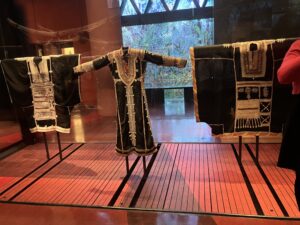

Les 1ère latinistes
 Votre enfant doit obligatoirement apporter une photo d’identité ce jour-là.
Votre enfant doit obligatoirement apporter une photo d’identité ce jour-là. Votre enfant doit obligatoirement apporter une photo d’identité ce jour-là.
Votre enfant doit obligatoirement apporter une photo d’identité ce jour-là.
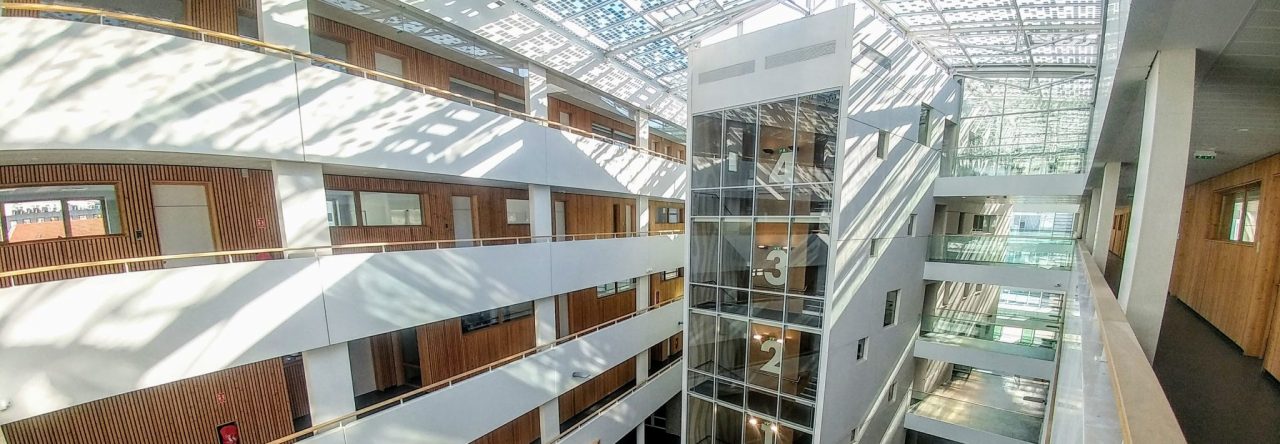

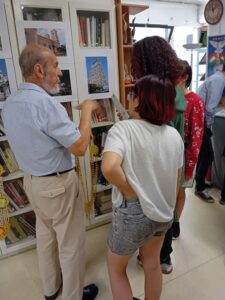
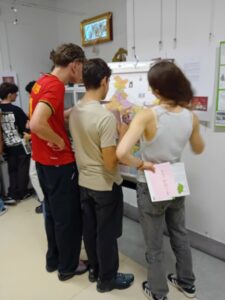
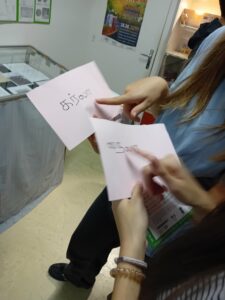


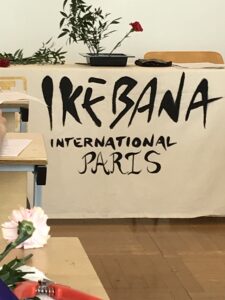 Ne cherche pas le muguet encore; entre deux valves de feuilles allongées en coquilles de moules, mystérieusement s’arrondissent ses perles d’un orient vert, d’où coulera l’odeur souveraine…
Ne cherche pas le muguet encore; entre deux valves de feuilles allongées en coquilles de moules, mystérieusement s’arrondissent ses perles d’un orient vert, d’où coulera l’odeur souveraine…